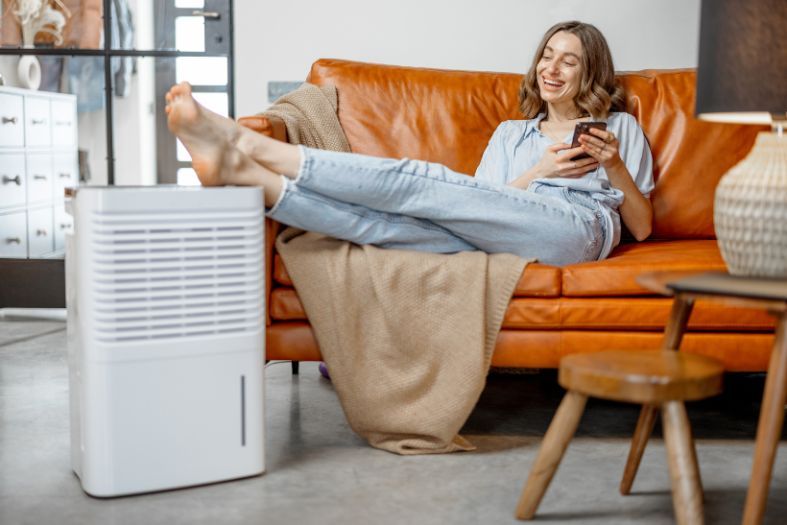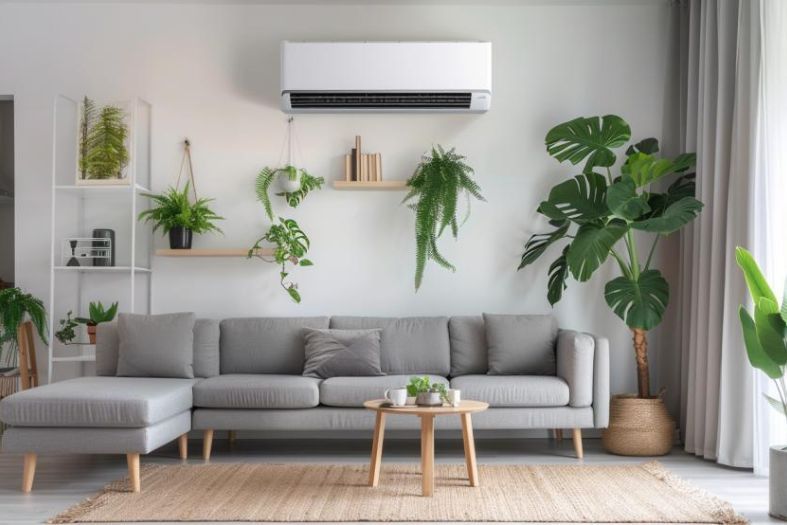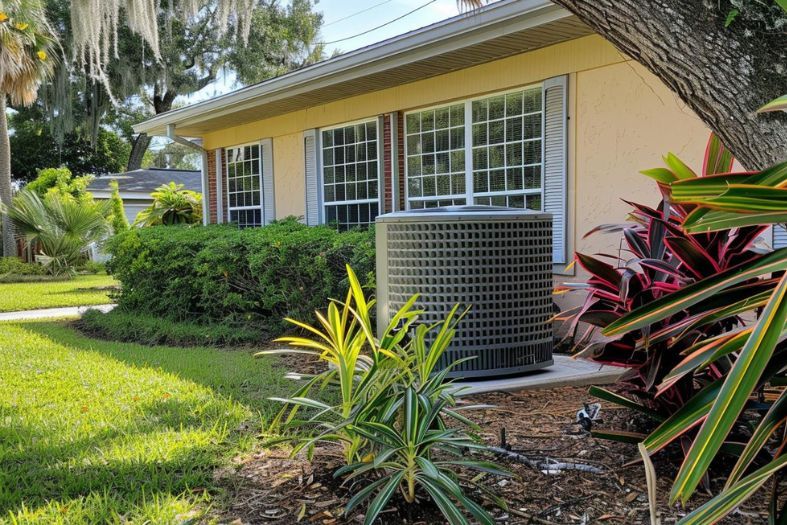
Issues That Can Cause Furnaces to Blow Cold and How to Fix Them
When your furnace is running, you obviously expect hot air to blow out of your vents. If you notice that cold air is blowing out of your vents when your heating is on, this typically indicates that there is a problem with either the furnace, thermostat, ductwork, or gas supply. Here is everything you need to know about the different issues that can cause a furnace to blow cold air and how they can be fixed.
Thermostat Isn’t Set Correctly
If you notice cold air coming from the vents, the first thing to do is make sure that you have the thermostat set to “Heat” and not “Cool.” This one is usually obvious since you should hear your air conditioner running and not your furnace.
You should also make sure that the fan is set to “Auto” and not “On.” If the fan is set to “On,” it will run constantly even when the furnace isn’t on. When the furnace is on, the fan is constantly drawing in cold air through the return vents and blowing hot air out of the supply vents. If the fan continues to run after the furnace shuts off, it will start blowing cold air since the air being drawn into the ductwork is no longer being heated. For this reason, it is recommended that you always leave your fan set to “Auto” whenever your heating or your air conditioning is turned on.
Dirty HVAC Air Filter
HVAC air filters should always be replaced at least every three months or potentially more often. You should make sure to check the filter regularly and replace it whenever it starts to look dark and gray or is covered in a thick layer of dust and debris.
If the filter isn’t replaced regularly, it will get extremely dirty, and very little air can flow through it. A clogged air filter will prevent sufficient air from being able to flow into the furnace. If no cold air can be drawn into the furnace, then there won’t be anything for it to heat. As a result, you will feel very little airflow coming out of the vents, and the air coming from the vents might be cold or not as hot as usual.
Leaking or Poorly Insulated Ductwork
Small duct leaks typically aren’t a major issue. Any leaks in your ductwork will contribute to energy waste and increase your heating costs, but they won’t always affect how much hot air is coming out of your vents. Large air leaks can allow cold air to get inside the ductwork. This will obviously lower the temperature of the air inside the ducts and can result in the air coming out of your vents being colder.
A similar issue can occur if your ductwork runs through the basement or crawl space and is not fully insulated. Basements and crawl spaces typically stay quite a bit colder, which is why ducts in these areas always need to be insulated. If the ducts aren’t insulated, the cold air can cause the ducts to become extremely cold and lower the temperature of the air flowing through them.
Dirty or Clogged Furnace Burners
Furnace burners should always be cleaned at least once a year, and this is one of the many things involved in professional furnace maintenance. If you don’t have your furnace maintained regularly, the burners will soon become coated in dirt and grime. When the burners are dirty, it can prevent the gas flowing through them from fully combusting. If the gas doesn’t fully combust, much less heat will be created and the air that comes out of the furnace may remain cold. The solution to this issue is to have a furnace technician clean the burners. This problem can also easily be prevented by having your furnace professionally maintained every fall.
Insufficient Gas Supply
The cold air coming from your vents could also be a sign that there is an issue with the gas supply coming into the furnace. If not enough gas flows into it, the furnace will obviously produce far less heat. This issue can be caused by gas leaks, a kink in the gas line, or because the gas shut-off valve is not fully open. It could also be that there is an issue with the gas supply coming into your house, and this will affect both your furnace and any other gas-burning appliances.
Gas leaks are easy to detect because you will notice a rotten egg smell near the furnace. If the furnace is fed with a flex gas line, you need to make sure that there is not a bend or kink in the line. You also want to check that the gas valve is fully open. When open, the handle on the valve should be parallel with the gas line. If the handle is at an angle, it means the valve is not fully open.
Cracked Heat Exchanger
This is the most serious of the possible causes and could lead to carbon monoxide seeping out into the rest of your home. The heat exchanger in a furnace serves two main purposes. The first is to transfer heat energy from the combustion chamber into the cold air flowing into the furnace. As the furnace burns gas, it heats the heat exchanger. Cold air is drawn over the heat exchanger and the heat energy naturally flows from the exchanger into the cold air.
The second purpose is to seal off the combustion chamber so that combustion fumes like carbon monoxide can’t escape. If the heat exchanger is cracked, it will allow the hot gases to escape from the combustion chamber. This prevents the heat exchanger from getting hot enough to warm up the air flowing into the furnace, and it can also allow carbon monoxide to escape into the ductwork and be circulated throughout the home.
The most common reason that heat exchangers crack is due to the furnace overheating, but it can also happen simply due to aging and normal wear and tear. If your furnace is still under warranty, you can hire an HVAC technician to replace the heat exchanger. If your furnace is older and no longer covered by a warranty, you are usually advised to have a new furnace installed.
Furnace Isn’t Running
This last problem isn’t all that common and typically means that there are issues with both your furnace and your thermostat. There are numerous issues that can cause a furnace to either not turn on or quickly shut down. This can happen due to issues with the gas supply, the pilot light or electric igniter, the flame sensor, or the furnace burners. If the furnace shuts down soon after turning on, it usually means that there is some issue that is causing it to overheat. All of these are things that you will need to have repaired by a professional HVAC technician. However, they still shouldn’t cause your heating system to blow cold air unless your thermostat isn’t working correctly.
The thermostat is what controls both the furnace and the blower fan and signals them to turn on and off, and it should automatically signal the fan to shut off if the furnace doesn’t light or shuts off for any reason. If the fan continues to run even when the furnace isn’t on, this usually indicates that the thermostat isn’t working correctly for some reason. In some cases, it may simply be that the batteries in the thermostat don’t have sufficient charge for them to work correctly.
At [company_name], we specialize in furnace inspections, maintenance, and repairs. Our team can quickly determine what is causing your furnace to blow cold air. We also work on and install air conditioners, ductless mini-splits, and indoor air quality equipment for customers in Gainesville and the surrounding areas. To schedule a furnace inspection or any other HVAC service, give us a call today.
Table of Contents
More Articles
Categories












Leave a Reply